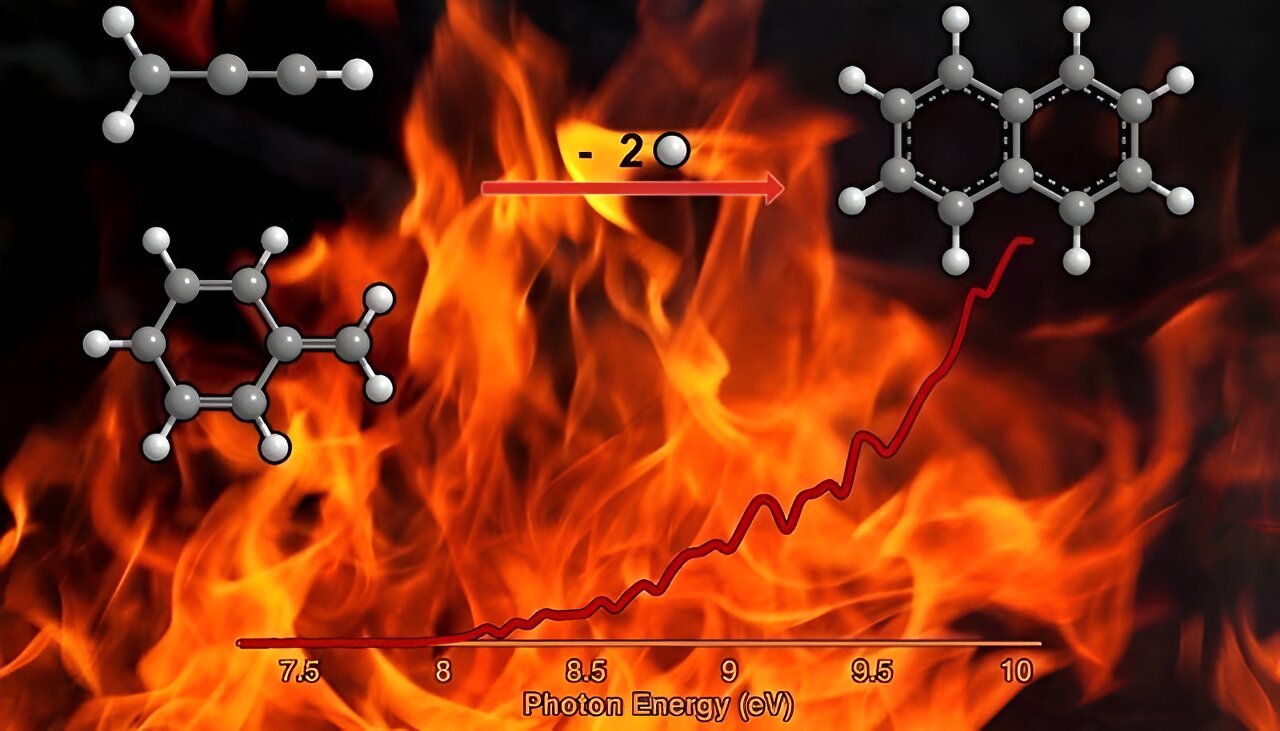Polycyclic aromatic hydrocarbons (PAHs) are a type of organic molecule that carry fused rings made of the chemical benzene. Scientists believe that PAHs are responsible for chemical processes that eventually lead to soot and other carbonaceous nanoparticles on Earth and around and between the stars in deep space. On Earth, PAHs form in part because of the incomplete combustion of coal, oil, and other substances and are detrimental to human health.
Across the universe, PAHs account for as much as 30% of all carbon, whether around stars, interstellar clouds, or planets. However, scientists do not fully understand the role of reactions involving two free radicals in how PAHs form in extreme environments. Free radicals are molecules with an unpaired electron, which is delocalized over at least three atoms. In a study published in the journal Chemical Science, researchers conducted experiments to uncover how the prototype PAH—naphthalene—can form from reactions that take place in the gas phase of matter.
The results provide fundamental knowledge on the processes that can form the simplest representative of PAHs naphthalene—a key ingredient in mothballs. The researchers found that this reaction can occur in the gas phase via the reaction of radicals that are found in combustion flames and in the space around carbon-rich stars. This provides new foundational knowledge of the chemistry and carbon balance of our galaxy.
Polycyclic aromatic hydrocarbons (PAHs) and their descendant soot particles represent unwanted byproducts in combustion processes of fossil fuel, but scientists do not have a complete understanding of the fundamental mechanisms of their formation. An isomer selective product detection reveals that the reaction of the resonantly stabilized benzyl (C7H7) and the propargyl (C3H3) radicals synthesizes the simplest representative of PAHs—the 10p Hückel aromatic naphthalene (C10H8) molecule.
The gas-phase preparation of naphthalene affords a radical new concept of the reaction of combustion relevant propargyl radicals with aromatic radicals carrying the radical center at the methylene moiety (aromatic-CH2•), which have been previously overlooked as a source of aromatics in high temperature environments.
2023-09-14 20:00:04
Original from phys.org rnrn
